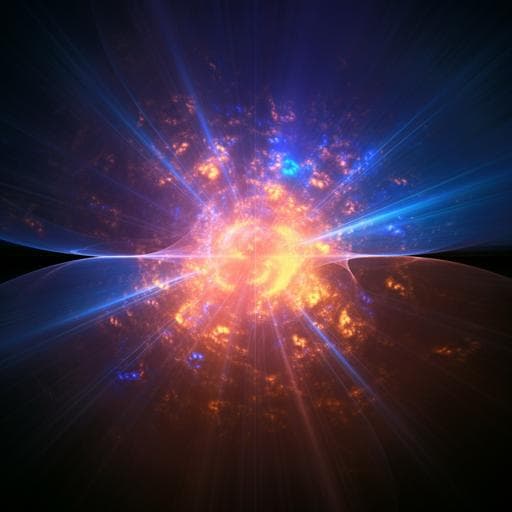
Psychology
Report from a Tibetan Monastery: EEG neural correlates of concentrative and analytical meditation
B. Neri, A. L. Callara, et al.
This fascinating study conducted by Bruno Neri and his colleagues unveils the neural correlates of concentrative and analytical meditation, revealing significant differences in EEG power changes. With 23 monks participating in this groundbreaking research, the findings enhance our understanding of these two meditation types and their effects on the brain.
~3 min • Beginner • English
Introduction
The study investigates whether the two primary Tibetan Buddhist meditation practices—concentrative (focused attention; Shamatha) and analytical (Vipassana/Lhakthong)—exhibit distinct neurophysiological (EEG) signatures, and how practitioner expertise influences these correlates. Prior work classifies meditation broadly into Focused Attention and Open Monitoring, with concentrative practices linked to decreased default mode network activity and EEG increases in alpha/theta power. Analytical meditation involves sustained, conceptually driven analysis of Dharma topics and may engage different cognitive mechanisms. The authors hypothesized that subject-specific differences and levels of expertise would produce variable durations and spectral dynamics during meditation. The purpose was to characterize within-session EEG spectral changes, identify features that distinguish concentrative from analytical meditation, and explore the influence of retreat experience on these neural markers in an ecologically valid monastic setting.
Literature Review
The paper situates meditation research within contemplative neuroscience, noting OMM vs FAM frameworks and the prevalence of concentrative practices in Western mindfulness protocols. fMRI meta-analyses show concentrative meditation activates attention/control regions (premotor, DLPFC, dorsal ACC) and deactivates DMN nodes (PCC, inferior parietal), suggesting reduced mind-wandering. EEG reviews report concentrative meditation increases alpha and theta power (anterior/posterior alpha; fronto-temporal and parieto-occipital theta) and sometimes posterior gamma. Analytical meditation is described as sustained, conceptually guided analysis (e.g., emptiness, compassion), comparable to Vipassana in Tibetan tradition. The authors highlight ongoing controversies: heterogeneous practice definitions, measurement challenges, sample diversity, long-term effects, and potential hype/bias. Collaborations with monastic universities are proposed as a route to improve ecological validity and cultural specificity.
Methodology
Context and participants: Data were collected over ~12 weeks within Sera Jey Monastery (Bylakuppe, Mysore, India), ensuring ecological validity. Twenty-three male Geshes/monks participated (beginners n=9, intermediates n=6, advanced n=8), all within the Sutra system. Expertise categories: beginners (<1 year; 20–30 min/day), intermediates (1–10 years; 60–90 min/day), advanced (full-time meditators; ≥6 months retreat; some with multiple years). Total sessions: 35 (16 concentrative, 19 analytical). Ethical approval obtained from the University of Pisa (n. 0117745/2020). Procedure: Each session began with a 5-minute eyes-closed resting baseline. Participants then performed analytical and/or concentrative meditation at their best without time limits; they could move/retire to another room. Debriefing followed each session. Device and acquisition: Portable 19-channel EEG (10–20 system; EBNeuro BE PLUS LTM), 512 Hz sampling, shoulder-bag recorder enabling mobility. Electrode impedances kept <25 kΩ. Preprocessing: Downsample to 100 Hz after low-pass anti-aliasing (45 Hz). High-pass at 1 Hz (zero-phase, non-causal). Bad channels identified via correlation with neighbor-reconstructed signal (threshold r=0.7) and visual inspection; removed channels interpolated (spherical spline). Re-reference to average. ICA with AMICA to identify/remove ocular/muscle/channel-noise components; reconstruct cleaned scalp EEG. Implemented in EEGLAB/MATLAB. Time-varying PSD (tvPSD): Sliding analysis using 5-minute non-overlapping windows across the entire session. Within each window, Welch PSD with 5-second segments, 80% overlap, zero padding 1024; PSD in dB. Feature extraction: - Average Frequency Band (AFB) PSD per electrode and globally (average over electrodes) for bands: δ (1–4 Hz), θ (4–8 Hz), α1 (8–10 Hz), α2 (10–12 Hz), α3 (12–14 Hz), β1 (14–20 Hz), β2 (20–30 Hz), γ (30–45 Hz). - Continuous High Resolution (CHR) PSD features describing frequency-specific maximum positive (Δ+) and negative (Δ−) deviations from baseline across the spectrum, and maximum alpha peak height change relative to baseline (Δα-peak) obtained by visual inspection of the alpha range per 5-minute window. - Identification of a distinct “bump” (peak) in the β range: counted sessions with bumps, quantified Δβ (difference vs baseline), and the bump frequency. Statistical analysis: Due to variable session durations and unbalanced designs, both within- and between-session analyses were used. - Within-session: For each subject, Wilcoxon rank-sum tests compared each 5-minute window vs baseline for AFB features (α=0.05), controlling multiple comparisons with Benjamini–Yekutieli FDR. The percentage of windows significantly differing from baseline was computed per band and condition. - Between-session: Linear mixed models (LMMs; MATLAB fitlme) with meditation_type as fixed effect and random intercept by subject ID assessed CHR features (Δ+, Δ−, band-specific deviations, Δα-peak); FDR control applied. - Expertise/retreat effect: For a subset of 4 advanced monks all engaged in the same retreat type (Yamantaka; 4 sessions/day, ~2h each; 11 sessions total), LMM with time_in_retreat as fixed effect and random intercept tested association with Δα-peak.
Key Findings
- Dataset: 23 monks; 35 EEG sessions (16 concentrative, 19 analytical). - Within-session deviations (percentage of 5-minute windows significantly different from baseline; concentrative vs analytical): δ 58.33% vs 33.33%; θ 66.67% vs 50.00%; α (global) 86.36% vs 71.43%; μ (alpha-related) 66.67% vs 50.00%; α (sub-band) 80.00% vs 28.57%; β1 68.18% vs 71.43%; β2 77.78% vs 71.43%; γ 83.33% vs 76.92%. Overall, concentrative meditation produced more numerous and larger spectral changes across most bands. - Temporal evolution: In concentrative sessions, substantial changes often emerged after 20–25 minutes and persisted into late session stages, particularly in advanced meditators. - Between-session LMMs (CHR features): Positive deviations from baseline were significantly greater during concentrative vs analytical meditation across multiple bands, including Δ+ (t=2.6883, df=33, p=0.0112), Δ+θ (t=2.962, df=33, p=0.0056), Δ+α1 (t=5.6642, df=33, p=2.595e-06), Δ+α2 (t=2.9086, df=33, p=6.4496e-04), Δ+β1 (t=4.2475, df=33, p=1.6581e-03), Δ+β3 (reported as β features; t=2.5253, df=33, p=0.0165), and overall Δ+ (t=4.4227, df=33, p=9.993e-05). Negative deviations Δ− were generally lower during concentrative (Δ−: t=−2.2365, df=33, p=0.0322), with an exception for Δ−α1. - Alpha peak variation: The maximum positive change in alpha peak height relative to baseline (Δα-peak) robustly distinguished practices, being larger in concentrative sessions (t=4.9434, df=33, p=2.1795e-05), with changes up to ~15 dB in some concentrative sessions, while analytical sessions rarely exceeded −2 dB changes. - Beta “bump” phenomenon: A distinct β-range spectral peak (“bump”) was observed in 20/35 sessions, sometimes increasing up to ~6 dB during meditation. It occurred more often in advanced meditators (13/16) than beginners (2/9), and more in concentrative (12/16) than analytical (8/19) sessions. - Special cases in concentrative sessions: (i) absent alpha peak at baseline emerging during practice; (ii) abrupt disappearance/reappearance of the alpha peak after 10–15 minutes, with broadband spectral shifts; (iii) inverse covariation between θ/α and β/γ bands in some advanced meditators (increases in θ/α accompanied by decreases in β/γ and vice versa). - Expertise effect: Among advanced meditators engaged in standardized retreats, years in retreat significantly predicted larger Δα-peak (p=0.039), suggesting experience-related amplification of concentrative EEG markers.
Discussion
Findings support that concentrative and analytical meditation engage distinct electrophysiological patterns. Concentrative meditation is characterized by stronger positive deviations from baseline in theta and alpha sub-bands (α1, α2), as well as beta and gamma, and a robust increase in alpha peak height/frequency dynamics. These effects align with theories linking alpha/theta augmentation to inwardly directed attention, inhibitory control of irrelevant sensory inputs, and relaxed yet alert states. Analytical meditation, operationalized as a sustained conceptual analysis, elicited fewer and smaller PSD deviations, suggesting either subtler power changes or involvement of neural mechanisms (e.g., connectivity, network dynamics) not captured by power alone. The temporal buildup (after ~20–25 minutes) and greater magnitude of changes in advanced meditators imply state stabilization with practice and potential dose–response with session duration and expertise. The observed beta “bump” and alpha peak switching phenomena, particularly in advanced practitioners, indicate nuanced spectral signatures that may reflect transitions between mental states or refined inhibitory gating. Overall, the results address the hypothesis that the two practices have differentiable EEG correlates and underscore the importance of ecological validity and practitioner expertise in contemplative neuroscience.
Conclusion
This ecological EEG study in a Tibetan monastic setting demonstrates that concentrative meditation elicits markedly greater EEG power changes than analytical meditation, especially increased theta/alpha power and a pronounced rise in alpha peak amplitude. These features, particularly Δα-peak, robustly differentiate the two practices and scale with retreat experience. Novel observations include frequent beta-range spectral bumps in experienced meditators and abrupt alpha peak switching during concentrative practice. The work contributes quantitative EEG markers for distinguishing meditation types and emphasizes the value of culturally coherent, in-situ investigations. Future research should: (i) increase and balance sample sizes across expertise levels and meditation types; (ii) integrate connectivity/network metrics and higher temporal resolution analyses; (iii) time-lock subjective reports/state transitions with EEG; and (iv) further probe expertise effects and session duration dependencies.
Limitations
- Sample size and imbalance: Small, unbalanced groups across expertise and meditation type (advanced practitioners more often performed concentrative sessions), introducing potential confounding. - Session heterogeneity: Variable and uncontrolled session durations; participants instructed to do their best without time constraints complicates between-session comparability. - Measurement scope: EEG power metrics only; potential analytical meditation effects in connectivity/network dynamics may have been missed. - Coarse time windows: Use of 5-minute windows may smooth rapid state transitions; abrupt alpha switching might be temporally finer than detected. - Lack of precise phenomenological time-locking: No real-time markers of subjective state transitions during sessions. - Generalizability: All male monastic participants from a single cultural context; findings may not generalize to secular or mixed-gender samples. - Device/channel density: 19-channel EEG limits spatial resolution for source localization.
Related Publications
Explore these studies to deepen your understanding of the subject.







